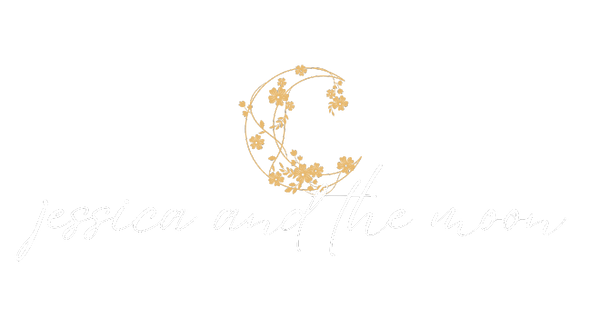
Exploring Sacred Symbols of Peace: Spiritual Meanings and Practices for Harmony
Share
In the article about Eirene, the Greek goddess of peace and prosperity, we explored how peace is not simply the absence of conflict but a living, nurturing force. Peace creates space for abundance, wisdom, and growth to flourish. Across cultures and traditions, sacred symbols have emerged to embody this force, each carrying profound layers of meaning.
In this post, we’ll take a deeper dive into these symbols—some familiar, some perhaps new—exploring their historical and spiritual origins, and offering practical ways to bring their energy into your daily practice.
1. The Olive Branch: Wisdom, Protection, and Sacred Law
The olive branch is now synonymous with peace, but its history extends far beyond the symbolic truce. In ancient Greece, the olive tree was sacred to Athena, goddess of wisdom, warfare, and civilisation. Athena gifted the olive tree to the city of Athens, symbolising peace, prosperity, and sacred law. The tree itself provided essential resources—food, oil, and wood—making it a foundational element of peaceful, prosperous life.
In Rome, the olive branch was not merely a symbol of negotiation but also a divine protector. Roman diplomats carried olive branches as an invocation of divine protection, even while entering enemy territory. This wasn’t just a gesture of truce; it was a sacred assurance that divine forces watched over them.
Practical suggestion: Create a sacred olive oil blend as a personal peace ritual. Using a small bottle of olive oil, add essential oils that resonate with peace for you—lavender for calming the mind, or frankincense for spiritual grounding. Use this oil to anoint yourself before meditation or sacred work. Self-massage your arms, neck, or feet with the oil, focusing on releasing tension and inviting peace into your body. As you do so, imagine Athena herself offering you divine wisdom and protection.

2. The Dove: Purity, Grace, and Divine Peace
While the dove is most widely recognized as a Christian symbol, particularly representing the Holy Spirit and peace, there are older possible connections to Inanna-Ishtar, the Sumerian goddess of love and war. In some early Mesopotamian texts, doves are mentioned as sacred to her, symbolizing the reconciliation of opposites—life and death, love and war. However, in current times, the dove is most commonly known in the Christian tradition, where it appears as a symbol of purity, divine grace, and peace. The dove carrying an olive branch, as seen in the story of Noah’s Ark, represents a new covenant between humanity and the divine.
Practical suggestion: Work with the dove’s energy by invoking it during moments of conflict or unease. Before entering a difficult conversation or dealing with stress, hold a white feather (or imagine holding one) in your hand, and envision a dove flying ahead of you. Picture it carrying your intentions of peace and resolution, creating pathways of grace in your interactions. Place white feathers on your altar or wear a small dove pendant as a reminder of divine peace.

3. The Lotus Flower: From Chaos to Cosmic Order
The lotus flower is a revered symbol in Buddhism and Hinduism, where it represents purity, enlightenment, and the ability to rise from suffering. The lotus grows from the mud, symbolising the journey from chaos to clarity, from struggle to peace. This blossoming process embodies the spiritual path: peace is not something that happens outside of us, but something we cultivate internally through wisdom and resilience.
In ancient Egypt, the lotus was connected to Ra, the sun god. It was believed that the lotus flower would open with the rising sun and close at night, symbolising the cycles of life, death, and rebirth. The lotus was seen as a representation of the cosmos unfolding from the primordial waters, bringing light and order from chaos.
Practical suggestion: Integrate the lotus into your morning routine as a symbol of peace emerging from daily struggles. Start your day with a brief meditation visualising a lotus flower blooming in your heart, representing peace unfolding from within. Light a lotus-shaped candle or place lotus imagery in your sacred space as a reminder of the peace you can create even in the midst of chaos.

4. The Crane: Graceful Longevity and Peaceful Partnership
In Japanese and Chinese cultures, the crane is a symbol of peace, longevity, and wisdom. In Japan, folding a thousand origami cranes is an ancient practice for peace, health, and protection, especially in times of difficulty. The story of Sadako Sasaki, a young girl affected by the Hiroshima bombing who folded cranes while wishing for peace, turned the crane into an international symbol of peace.
The crane is also a symbol of peaceful partnership. Cranes mate for life and work together to raise their young, embodying harmony in relationships. In Chinese mythology, cranes are said to carry the souls of the dead to the afterlife, representing the peace found in transcendence and the grace with which one moves through life and death.
Practical suggestion: Create your own simple peace ritual by folding origami cranes. With each fold, focus on setting an intention for peace in a specific area of your life—your home, a relationship, or even the world. Over time, hang these cranes in your space as a reminder of the peace you’re cultivating, both within and around you. If origami feels too time-consuming, you can use crane imagery or statues on your altar to call in peace, partnership, and divine grace.

5. The Circle: Unity, Protection, and Eternal Peace
The circle is a powerful symbol of unity, wholeness, and the cycles of life. It appears in sacred traditions worldwide, representing everything from the eternal nature of the universe to the interconnectedness of all beings. In Celtic Christianity, the Caim circle was drawn around individuals or communities to invoke divine protection. This practice symbolized the unbroken presence of God surrounding and shielding the person or group within the circle.
In Buddhism, the mandala is a circular pattern representing the universe and the journey towards enlightenment. Each layer of the mandala symbolizes different aspects of the cosmos, inviting peace through alignment with the cycles of creation, destruction, and rebirth.
Practical suggestion: Create your own sacred circle as part of your meditation or ritual. You could do this by physically drawing a circle around yourself with chalk, stones, or even small candles. Sit within the circle and call in peace as a protective boundary around you. Visualise this circle extending into your daily life, offering you protection and clarity in your interactions with others. You could also incorporate mandala drawing into your journaling practice, tracing or colouring mandalas as a peaceful, meditative practice that aligns you with the cycles of the cosmos.
Conclusion: Weaving Peace into Everyday Life
These symbols carry ancient wisdom, inviting us to look beyond the surface meanings of peace and to engage with it as a living, sacred force. Each offers a unique way to connect with peace—not only within ourselves but also in the world around us.
As you explore these symbols, play with them as possibilities to become living parts of your practice. Whether through anointing yourself with olive oil, meditating on the blossoming lotus, or folding cranes with peaceful intentions, you are invoking peace in all its forms.
For a deeper look into the role of the goddess of peace and prosperity, revisit the original post on Eirene.

For those wanting to dive deeper into working with Eirene, there’s a free guide available for download that you can use as a resource to explore her energy further. Whether printed or used digitally in apps like GoodNotes, this guide offers practical insights to help you connect with Eirene and invite peace and prosperity into your life.
Eirene: The Greek Goddess of Peace, Prosperity, and Nurturing




